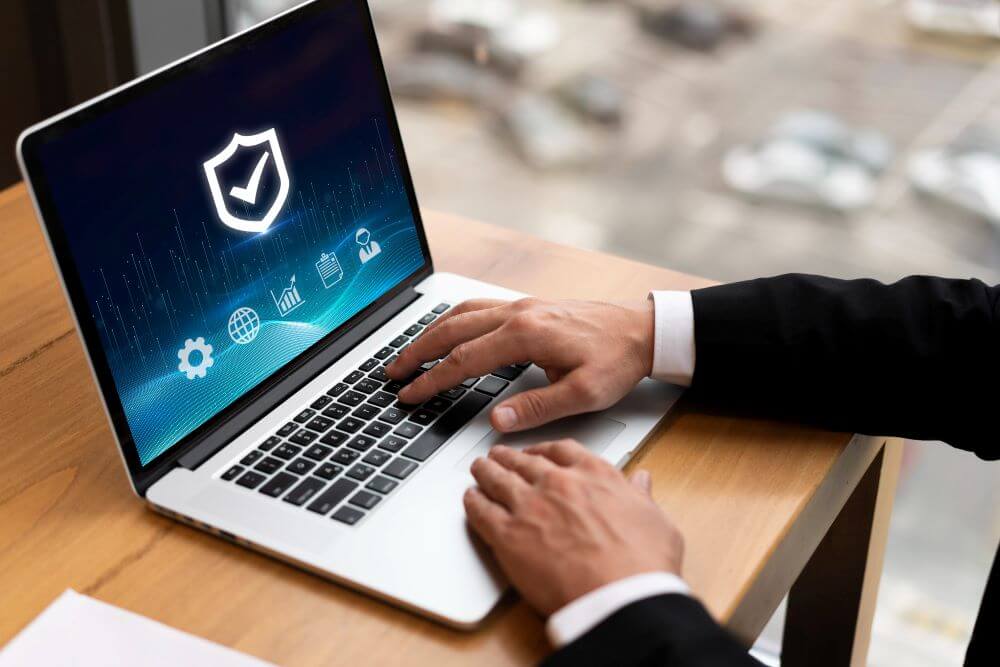When founding a business, cybersecurity doesn’t come to mind for many entrepreneurs. After all, who wants to hack a small company selling toys, crafts, or baby clothes, for instance? Unfortunately, startups and medium-sized businesses lack resources (updated software and informed employees) like large corporations, making them easy targets. Inadequate cybersecurity measures, according to Vodafone Business survey, cost SMEs (small and medium enterprises) £3.4 billion in monetary losses annually.
Plus, cyber attacks on SMBs are surging, with 35% reporting breaches in 2024 alone. Looking at these numbers, is your business cyber secure? If your response is no or we have never been breached, it’s time to assess your cyber safety practices and focus on building a security-first culture. There’s nothing like being 100% secure from threats but every business must have a strategic approach to minimize attacks. This post highlights ways to evaluate your company’s security and strengthen it.
Check Employee Cybersecurity Awareness Level
Is your staff aware of the tactics threat actors execute and how to respond to them? Your employees are the first line of defense in cyberspace. So, if they are uneducated, it means your organization is vulnerable to online attacks. The human element, based on Verizon’s 2024 Data Breach Report, continues to be ideal pathway for breaches, with 68% of data breaches involving a human. This refers to someone making an error or falling prey to phishing and other social engineering attempts.
A business that’s cyber safe trains employees about security techniques like strong password usage and applying MFA, or multi-factor authentication, to restrict access to their accounts. Also, provide continuous training that involves simulation exercises. Send fake phishing emails to test employees’ ability to spot and report suspicious mails and links, for example. Give workers practical exercises to defend against threats using real-world scenarios like Marks and Spencer’s recent ransomware encounter.
Are You Protected Against Ransomware?
Ransomware is fast-growing and the most pervasive threat for any organization as threat actors become more sophisticated with the help of generative AI. Besides losing data through encryption tactics deployed by hackers, the cost of ransomware attacks are devastating. Costs linked to ransomware don’t end when you pay the ransom. Think of the complete system shutdown after the attack. It can take weeks to recover, leading to downtime. Recovering from lawsuits and a destroyed brand reputation requires money too. That said, improving protection against ransomware is critical. Start with risk assessments. The goal is to spot system weaknesses (vulnerabilities) cyber criminals exploit to distribute ransomware and other attacks like DDoS (distributed denial of service), malware, and password theft. Once you’ve spotted weak links patch them and have regular backups online and offline. What else can you do? Monitor threats in real-time, keep devices and software updated, enhance access controls, and offer awareness education.
Evaluate Incident Response Planning
Does your business have a plan to react to incidents when they occur? Without a responding roadmap- employees won’t know what to do in the event of a breach. So have a well-documented approach on how to handle data breaches and lower disruptions to ensure business continuity. Simply put, planning for incident response helps your firm recognize, contain, and recover from attacks faster. When revising the firm’s IRP (incident response plan), make sure it states how incidents are detected. This could be through real-time monitoring and continuous assessment of technologies and operations. Then dictate roles, communication protocols, and resource allocations. In the IRP include short and long-term processes for threat containment, risk elimination, and system restoration guidelines.
Can you manage a cybersecure business by ticking one security checkbox or using one antivirus or anti-malware? Of course not. It takes nurturing a cybersecurity-first culture, being proactive, and continually preparing for new threats. What you should do for your growing enterprise is invest in Employee security awareness education programs. Understand how ransomware is advancing and prepare for it through consistent risk assessments, real-time monitoring, and planning for incident response.






